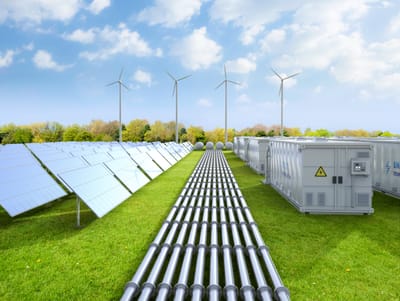Innovative Energy Solutions
Empowering Sustainable Integrations
Revolutionizing Energy Storage
Enhance Your Sustainability Journey with Us
ABOUT
Whether it be energy that powers smartphones or even fuelling entire cities, energy storage solutions support infrastructure that acts as a foundation to the world around us.
At Stellar Energy Australia, we specialize in delivering advanced battery storage and energy solutions that seamlessly integrate with existing building technologies. By utilizing cutting-edge algorithms, we enable flexible applications such as demand management, frequency regulation, and the incorporation of renewable energy sources. Our dedication is to provide tailored solutions that enhance efficiency and contribute to a sustainable future for our clients.
At Stellar Energy Australia, we specialize in delivering advanced battery storage and energy solutions that seamlessly integrate with existing building technologies. By utilizing cutting-edge algorithms, we enable flexible applications such as demand management, frequency regulation, and the incorporation of renewable energy sources. Our dedication is to provide tailored solutions that enhance efficiency and contribute to a sustainable future for our clients.
Energy storage
safety
safety
The rapid growth of renewable energy and the need for a flexible, stable grid have made battery storage integral to energy infrastructure—from homes and businesses to industrial sites and critical facilities. However, many battery chemistries, including lithium-ion, lead-acid, and sodium-ion, carry significant safety risks, such as thermal runaway that can lead to fires, toxic chemical releases, and environmental hazards. These risks not only restrict deployment in sensitive settings but also introduce regulatory and logistical challenges that can impose substantial financial burdens for battery energy storage system (BESS) projects.
Zinc-ion technology stands out as one of the safest battery solutions available. Its intrinsic safety is engineered from the outset, minimizing environmental and operational risks, simplifying compliance, and lowering lifecycle costs. This enables opportunities for zinc-ion batteries in markets where conventional batteries fall short—like densely populated urban areas, hospitals, defense depots, ships, and mines. Zinc-ion batteries offer a future-proof path to scaling BESS economically, responsibly and with fewer trade-offs.
At Stellar Energy Australia, safety is the highest priority —a commitment reflected by rigorous safety standards and partnerships with the fire service that guide planning, developing, and operating each energy storage project.
Zinc-ion technology stands out as one of the safest battery solutions available. Its intrinsic safety is engineered from the outset, minimizing environmental and operational risks, simplifying compliance, and lowering lifecycle costs. This enables opportunities for zinc-ion batteries in markets where conventional batteries fall short—like densely populated urban areas, hospitals, defense depots, ships, and mines. Zinc-ion batteries offer a future-proof path to scaling BESS economically, responsibly and with fewer trade-offs.
At Stellar Energy Australia, safety is the highest priority —a commitment reflected by rigorous safety standards and partnerships with the fire service that guide planning, developing, and operating each energy storage project.
Services
Key features based on industry-leading technology
Maximum safety and reliability
Extended lifespan and service intervals
Outstanding performance for high-demand grid-scale applications
Easy integration to reduce installation time and risks
Early Stage Application Development
Stellar Energy Australia specialises in early-stage energy storage development. Our experienced consultants provide expert guidance and insights to help design a system that is efficient, reliable, and cost-effective.
Articles
This is a generic article you can use for adding article content / subjects on your website.
Read MoreThis is a generic article you can use for adding article content / subjects on your website.
Read MoreContact
- 830 Elizabeth Street, Waterloo NSW 2017, Australia
- Info@stellar-energy-australia.com
- Mon-Fri - 08:00-19:00
F.A.Q
What is utility-scale battery storage system?
Utility-scale or grid-scale battery storage refers to technologies connected to the power grid that can store energy in rechargeable batteries and then supply it back to the grid. Without energy storage, electricity must be produced and consumed at exactly the same time. Energy storage systems allow electricity to be stored—and then discharged—at the most strategic and vital times, and locations.
How do utility-scale energy storage system (BESS) work?
Battery energy storage systems can gather and store energy from either the grid directly or from an adjoining solar farm or other power source. The energy is stored in rechargeable batteries and then can be strategically deployed when needed most. The most commonly deployed form of energy storage today is lithium-ion battery storage, which leverages similar technology as your cell phones and laptops. In the case of battery energy storage systems, this is just on a much larger scale, with more extensive requirements for certification and safety.
What are the advantages of energy storage?
Energy storage brings a number of benefits to customers, communities, and the grid: from maintaining a steady supply of clean energy to reinforcing our grid. Storage increases grid flexibility and helps provide uninterrupted power for consumers, businesses, and other users. These systems lower electricity costs while diversifying our energy mix for energy security and independence.
Can energy storage work with all fuel sources?
Yes, energy storage systems are technology- and fuel-neutral. Battery systems can be charged by renewable energy sources, or can be charged directly from the grid. Electricity from the grid can be generated by any number of technologies, including renewables like solar as well as oil, natural gas, coal, and nuclear power.
How does storage reduce energy costs?
- Utility-scale battery energy storage systems (BESS) supports the integration of more, low cost renewable energy generation that is now the cheapest source of electricity worldwide. Along with affordable electricity, adding renewables to our energy mix increase our nation’s energy security.
- BESS improves grid efficiency: Energy storage is instantly dispatchable to function both as generation and load, so it can help the grid adjust to fluctuations in demand and supply, which optimizes grid efficiency, alleviates transmission congestion, and increases grid flexibility. This reduces overall system costs.
- BESS helps limit the need for costly energy imports and increases energy security: Energy storage improves energy security and maximizes the use of affordable electricity produced in the United States.
- BESS helps prevent and minimizes power outages: Energy storage can help prevent or reduce the risk of blackouts or brownouts by increasing peak power supply and by serving as backup power.
Do batteries produce noise?
Batteries alone do not make any noise. Noise is generated from the fans and chillers that are used to cool the batteries during charging and discharging. The systems themselves are installed at a distance to mitigate noise. Lightsource bp will conduct analysis of maximum sound levels emitted from the BESS and ensure compliance with all applicable requirements.
How does BESS support the grid?
Battery energy systems enhance grid reliability by making power accessible when needed. BESS can serve as a dependable power source in extreme weather events or in the case of equipment failure. These systems match power supply and demand, making the grid more resilient and efficient.
What is the difference between energy storage capacity and duration?
Power capacity is the maximum amount how much electric power an energy storage system can charge or deliver in megawatts (MW), while duration is how long it can do so in hours. A megawatt-hour (MWh) is typically the unit used to describe the amount of energy a battery can store, in megawatts multiplied by hours.
Take, for instance, a 240 MWh lithium-ion battery system with a maximum capacity of 60MW. That battery can deliver 60MW for 4 hours.
Take, for instance, a 240 MWh lithium-ion battery system with a maximum capacity of 60MW. That battery can deliver 60MW for 4 hours.
How long batteries last?
Batteries typically have a lifespan of at least 20 years, however depending on usage, the batteries may still have usable capacity after 20 years.



